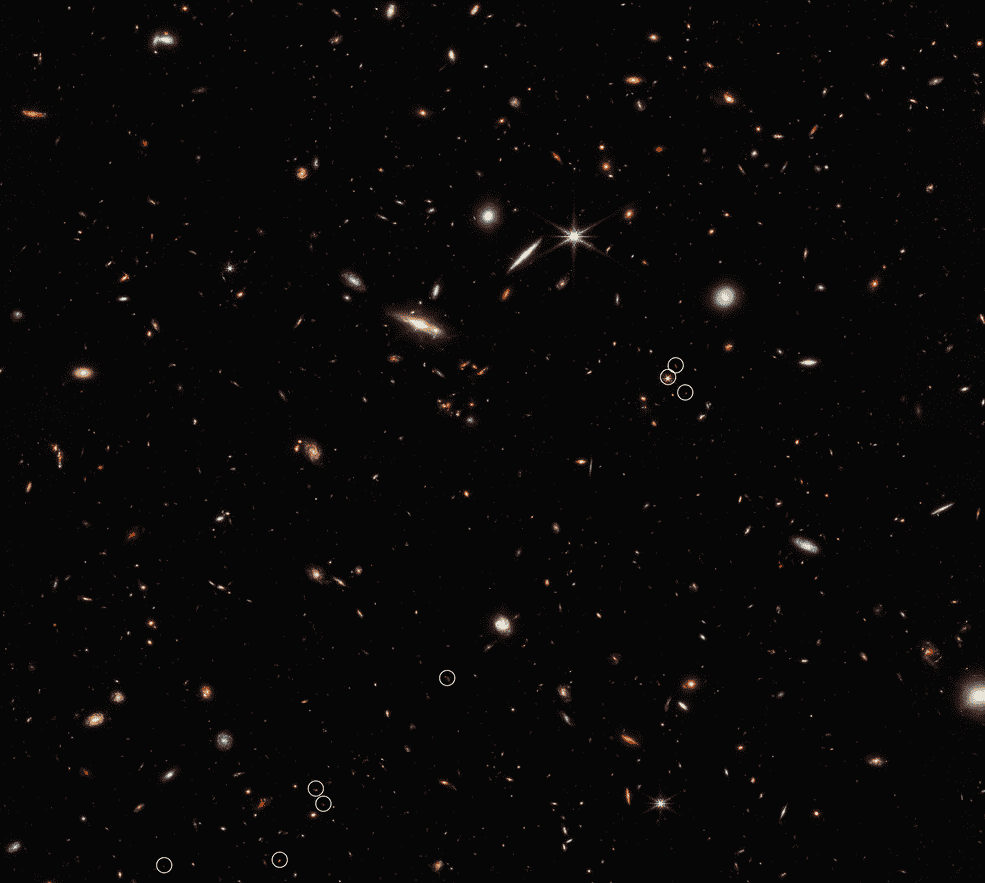
Galaxies are not randomly dispersed throughout the cosmos; they cluster together, joined by filamentary structures, with enormous interstitial spaces in between. The birth and evolution of the cosmos can be glimpsed in these cosmic webs, which have fascinated astronomers for years.
Now, James Webb Space Telescope (JWST) observations reveal an extraordinary thread-like arrangement of galaxies that existed just 830 million years after the Big Bang. These observations represent a recent breakthrough in our understanding.
This discovery was reported by the ASPIRE project (A SPectroscopic survey of biased halos In the Reionization Era), whose main goal is to study the cosmic environments of the earliest black holes. The program will observe 25 quasars that existed within the first billion years after the Big Bang, a time known as the Epoch of Reionization.
During their search, they encountered a thread-like structure of ten galaxies that existed just 830 million years after the Big Bang. A luminous quasar anchors the three million light-year-long structure — and the researchers were caught off guard by its shape.
“I was surprised by how long and how narrow this filament is,” said team member Xiaohui Fan of the University of Arizona in Tucson. “I expected to find something, but I didn’t expect such a long, distinctly thin structure.”
The group thinks this filament will develop into a galaxy cluster as large as the famous Coma Cluster in our own universe.
In another part of their research, the team looked at the characteristics of eight quasars in the early cosmos to study their filamentary structures. These galaxies existed fewer than a billion years after the Big Bang, and the scientists established that their central black holes had masses between 600 million and two billion times that of our Sun. These results provide fresh impetus for researchers to investigate the possibility of rapid black hole growth.
Two conditions must be met in such a short amount of time for such gigantic black holes to arise. To begin expanding, a large “seed” black hole is required. Second, even if this seed starts with the mass of a thousand Suns, it still needs to accrete an incredible amount of matter over its lifetime.
“These unprecedented observations are providing important clues about how black holes are assembled. We have learned that these black holes are situated in massive young galaxies that provide the reservoir of fuel for their growth,” said Jinyi Yang of the University of Arizona, leading the study of black holes with ASPIRE.
We now know these black holes are located in very large, relatively young galaxies that serve as their primary fuel source.
Evidence for the possible role of early supermassive black holes in regulating the production of stars in their host galaxies was also found in JWST data. When they accrete matter, these black holes produce tremendous outflows, or winds. These winds affect star formation and other galactic-scale events far beyond the black hole’s near proximity.
“Strong winds from black holes can suppress the formation of stars in the host galaxy,” Yang said. “Such winds have been observed in the nearby universe but have never been directly observed in the Epoch of Reionization. The scale of the wind is related to the structure of the quasar. In the Webb observations, we are seeing that such winds existed in the early universe.”
These results were published in two papers in The Astrophysical Journal Letters.






